The Commonwealth Ave Carriage Road Two-Way for Bicycles is now officially designated the Commonwealth Greenway. You can find a description and detailed map of the trail on TrailLink.



The Commonwealth Ave Carriage Road Two-Way for Bicycles is now officially designated the Commonwealth Greenway. You can find a description and detailed map of the trail on TrailLink.



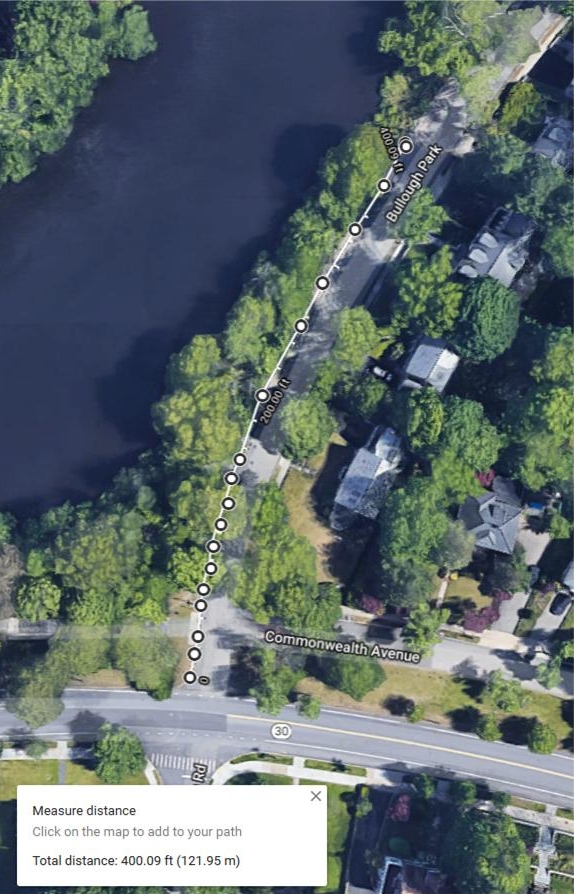
This section is a special case: As Bulloughs Park approaches Commonwealth Avenue, it bisects a section of the Carriage Lane on the east that is open to EB driving, and a section of Carriage Lane on the west that is a footpath only, and closed to motor vehicles.
It is also a very popular section: Drivers get a view of Bulloughs Pond on their right, and also get to bypass the traffic light at Walnut Street.
This design however has presented several dangers. We identified a few problems and a few solutions and below you will see how these have turned out.
First, in 2012 at our request, DPW added an “EXCEPT BIKES” sign to the bottom of the “Do Not Enter” – which had previously not had any such signage at all – where the footpath begins, for those heading west:

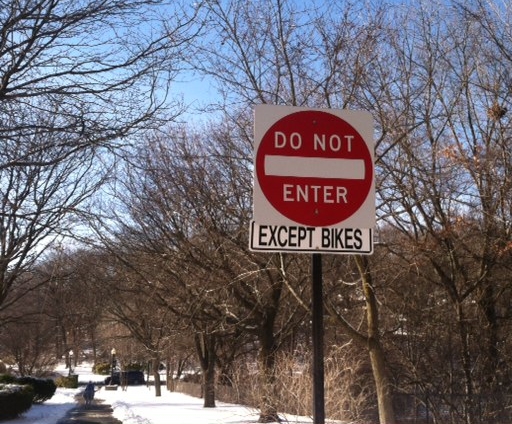
Another problem was the cobbled area immediately east of the intersection. The cobbles were seriously coming apart, with gaps as wide as 8 inches, and this presented a serious tripping hazard to the thousands who walked and ran here.
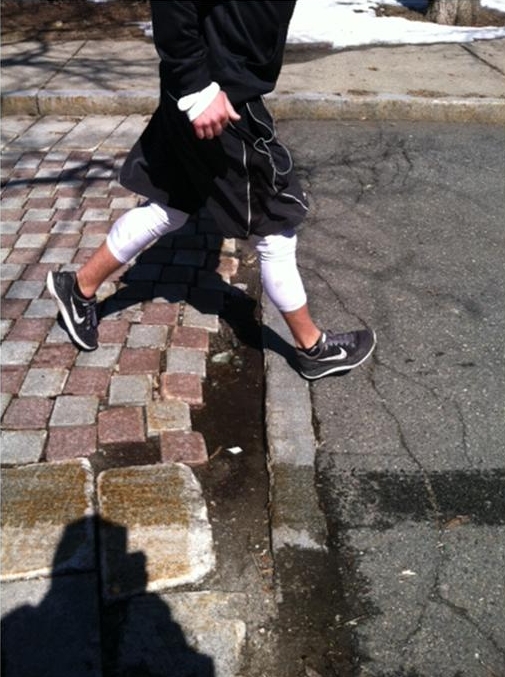
It took some time, but in the autumn of 2017 DPW removed the cobbles and replaced them with a new experimental surface.The Dept of Public Works was so proud of their work that they even tweeted about it (The Tweet has since been deleted, as the DPW isn’t carrying Tweets earlier than 2018 now.):
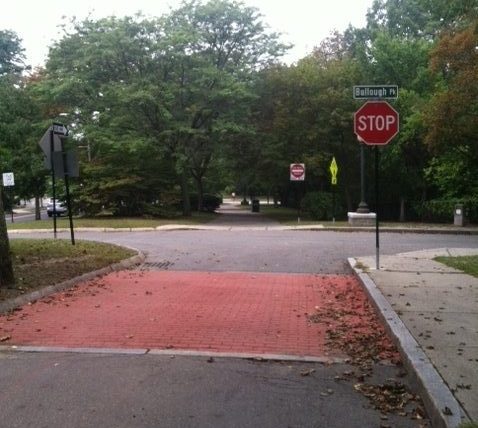
With the rise in the popularity of walking on the Carriage Lane, we noticed that people started parking their cars on Bullough Park, very close to the intersection with the footpath, and this would block a southbound driver’s ability to see a pedestrian or bicyclists exiting the footpath area. Councilor Downs agreed to docket regulations that prohibited parking for some distance north of that footpath.
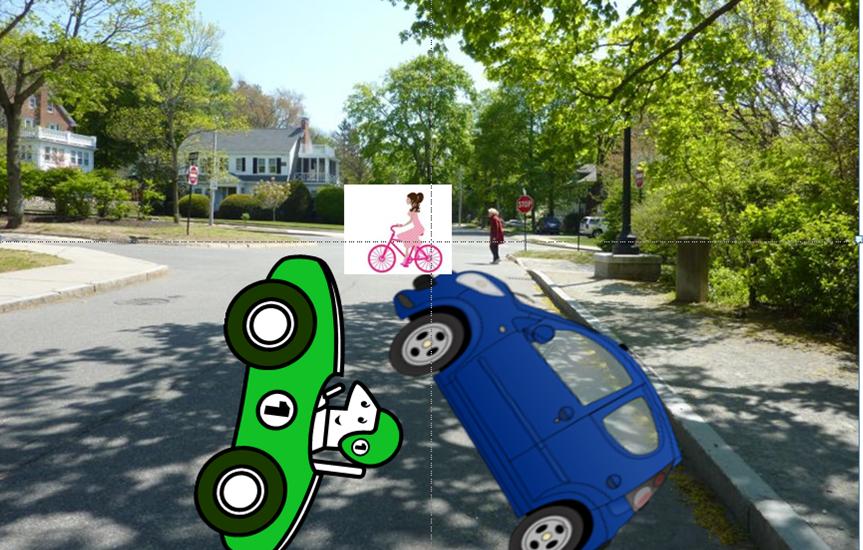

Recently we put in a request to add a pedestrian cross walk here. Due to regulatory requirements, that request could not be fulfilled at that time, but engineer Isaac Prizant worked with the Traffic Coordinator to add additional signs here, to awaken, and warn, drivers to the existence of bicyclists and pedestrians using this area as a crossing along the Carriage Lane. (The original diamond-shaped signs were added in 2015 by Transportation Zach Bosch (at our request) at various locations up and down the Carriage Lane.)
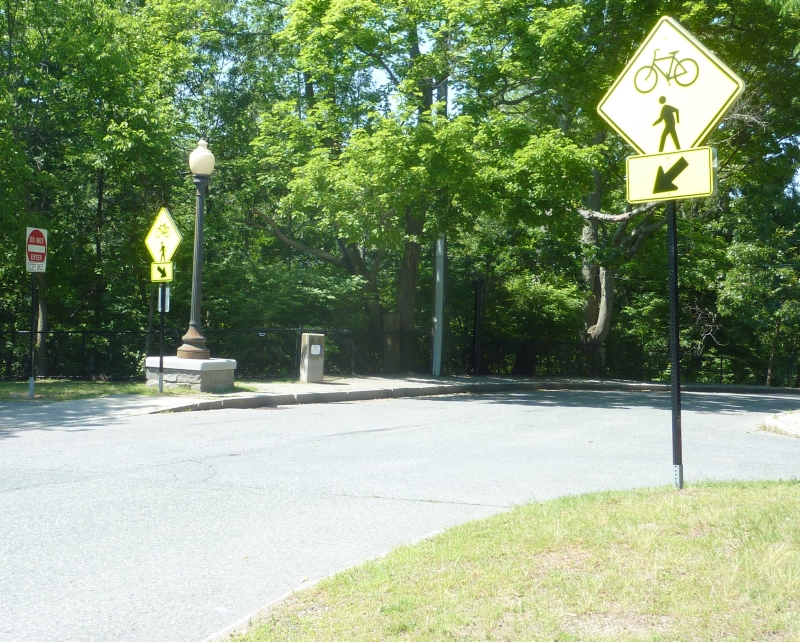
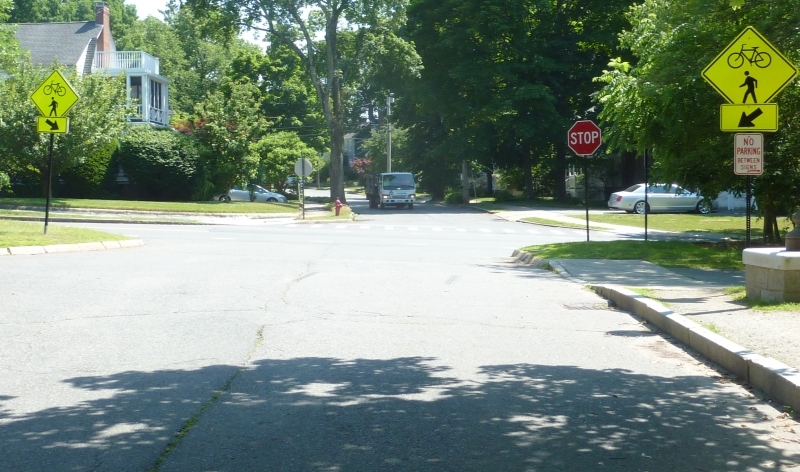
Commonwealth Avenue’s berm is a beautiful cascade of grass, trees, and flowering bushes, which makes it an ideal linear park. The corners of the crossroads and the Carriage Lane are adorned with statuesque lights on the SE and SW corners that sit in beds of perenniallly blooming bushes. The crossroads are lined with lovely and tall trees. However, often these overhanging branches and bushes grow to obstruct the vision of drivers. When this happens, these bushes and branches need to be cut back.
We think that the Dept of Parks and Recreation needs to be a part of the team, and needs to be invited to play a fundamental role in ensuring safety along the Carriage Lane. We think also that keeping foliage trim can beautify the garden area, as you’ll see in the photos below, and they are happy to be a part of that team and ensure safety for all.
In walking, biking and running up and down the Carriage Lane, we identified a number of intersections (see below) where safety is compromised because pedestrians going in one direction and drivers going in another cannot see around corners to see each other approaching and behave appropriately. Often the foliage was a modest size when small, but it has now grown to be too large in that location.
Below are some examples of locations where we contacted Parks and Recreation, who came in and saw the problem, and appropriately – and quickly – addressed the situation.
1. The first example is the intersection of Bulloughs Park and the Carriage Lane. Here, on both the NW corner and the NE corner, Phil and I personally got permission from Parks and Recreation to cut down the massive amount of foliage and eliminate the long strands of bittersweet that were was killing other nearby trees. Before, drivers approaching the opening to the pedestrian walkway between Bulloughs Park and Walnut St could not see eastbound pedestrians as they were about to approach the road, and southbound drivers could not see approaching pedestrians. See some photos below:
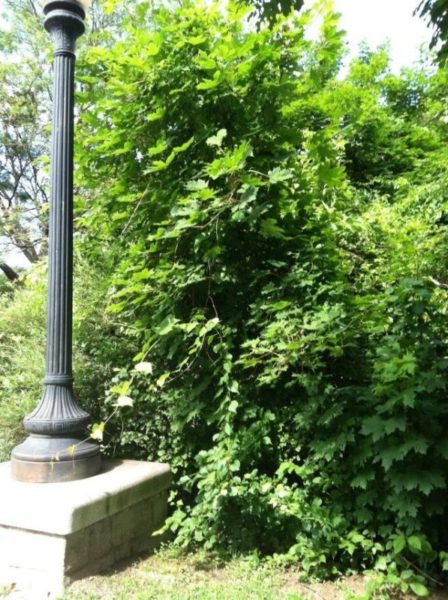
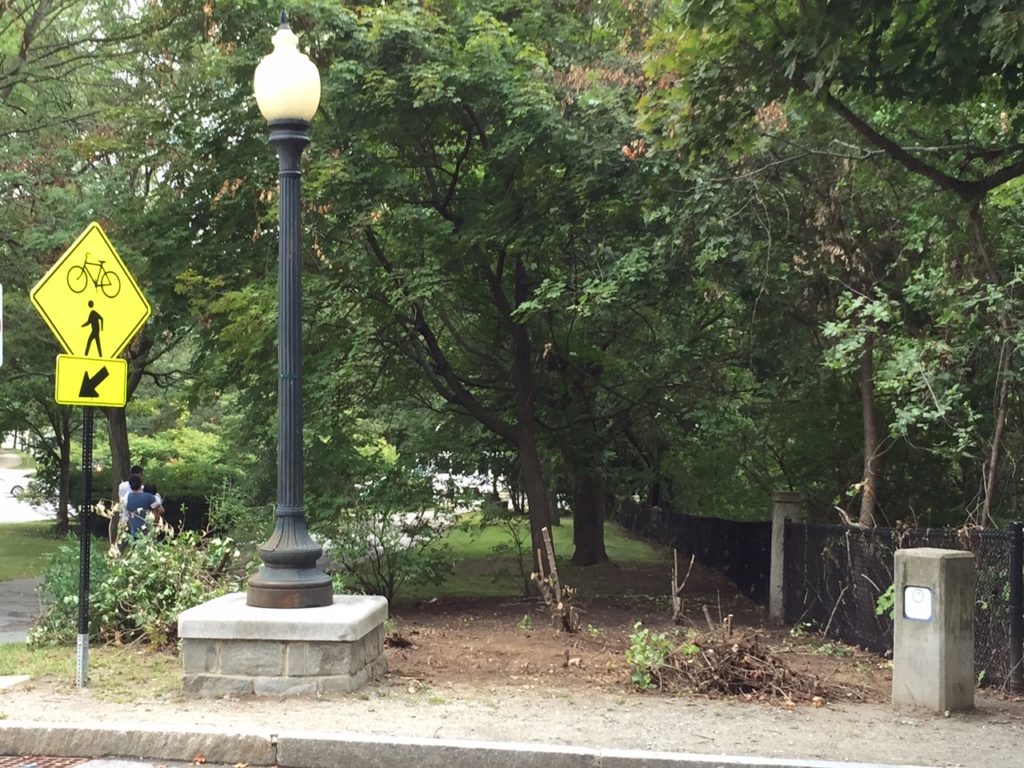
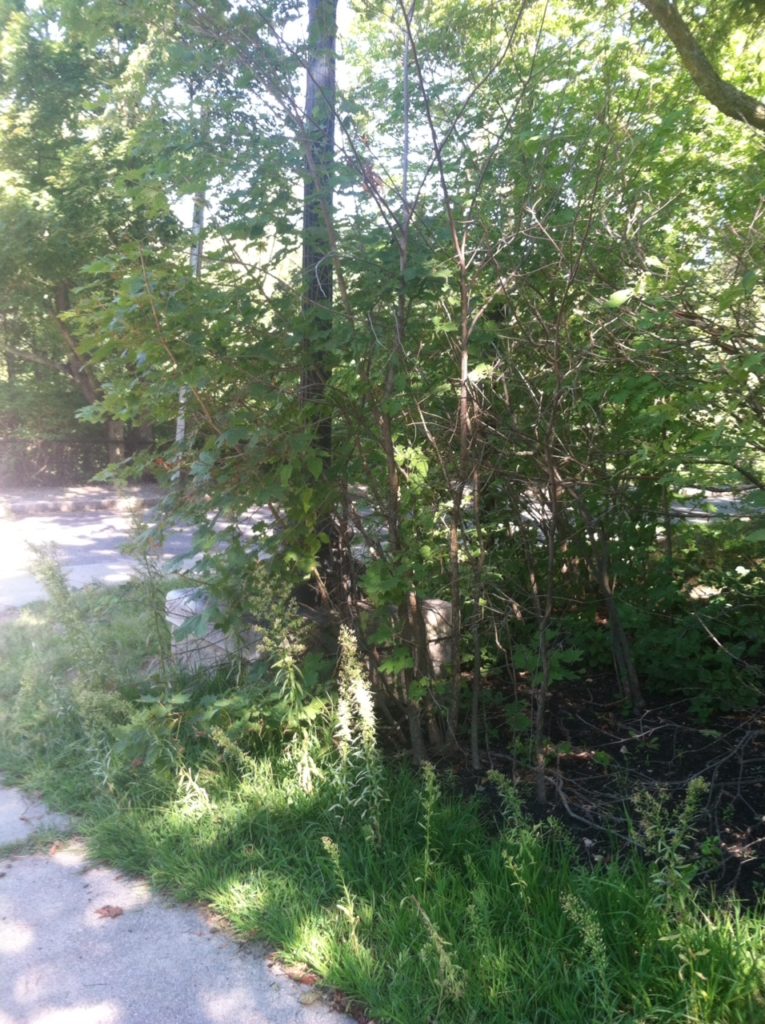
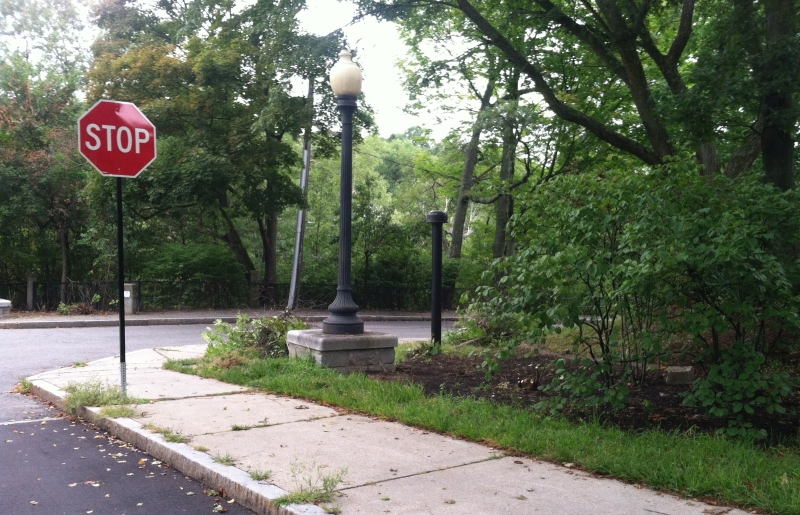
The ewes on the NE corner of Morseland and the Carriage Lane were extremely overgrown, and this compromised visibility of drivers on Morseland Road heading south and drivers (including bicyclists) on the Carriage Lane heading west. Happy to say that Commissioner DeRubeis personally came and saw this, and made sure that the bushes are kept low on a regular basis.
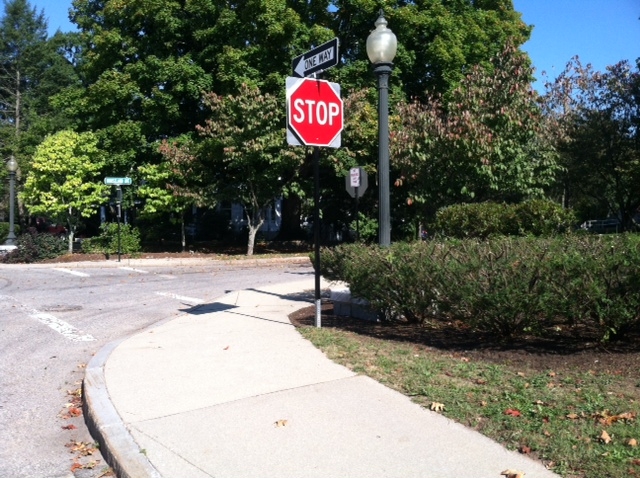
The pedestrian crossing on the berm east of Cedar Street created a sight line problem due to the existence of the utility pole and a row of ewes there on the left. Drivers along the Carriage Lane could not see pedestrians crossing over to the Carriage Lane side until they were second from colliding.
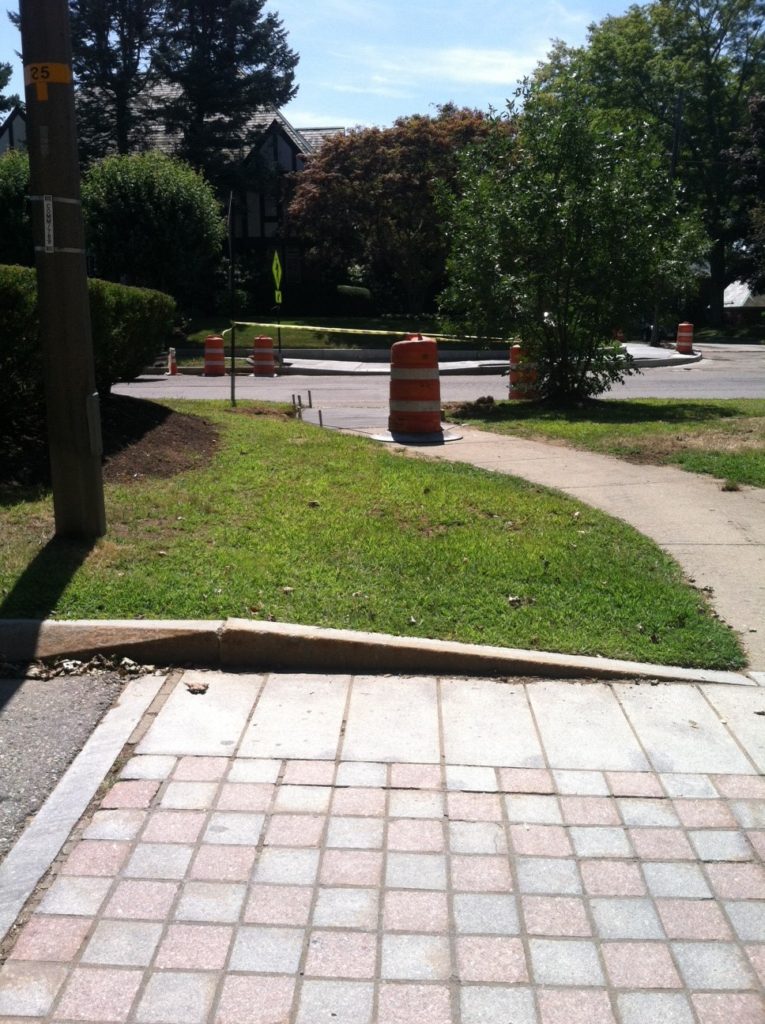
Commissioner DeRubeis graciously had removed an entire row of those ewes to give better visibility. (The mound of mulch has since lowered.)
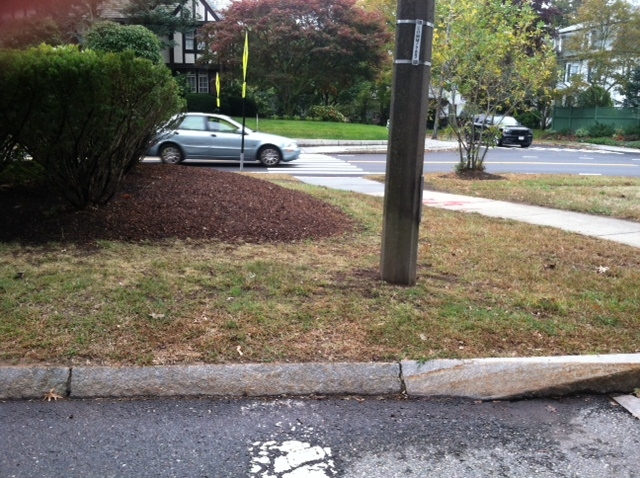
This intersection at the NW corner of the Carriage Lane and Hammond Road had been ignored for years. The gas lamplight was totally consumed by trees.
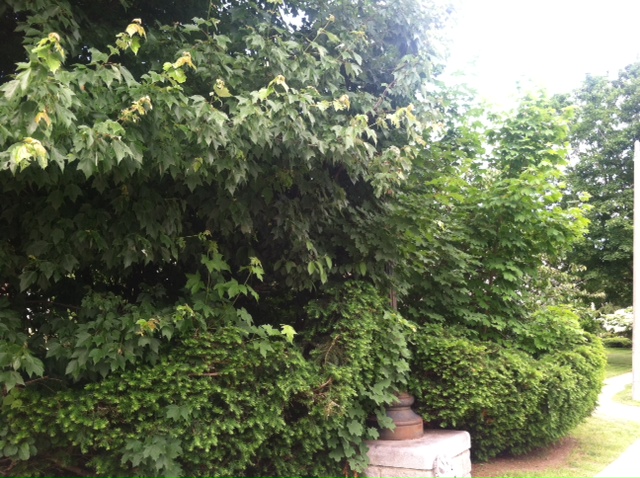
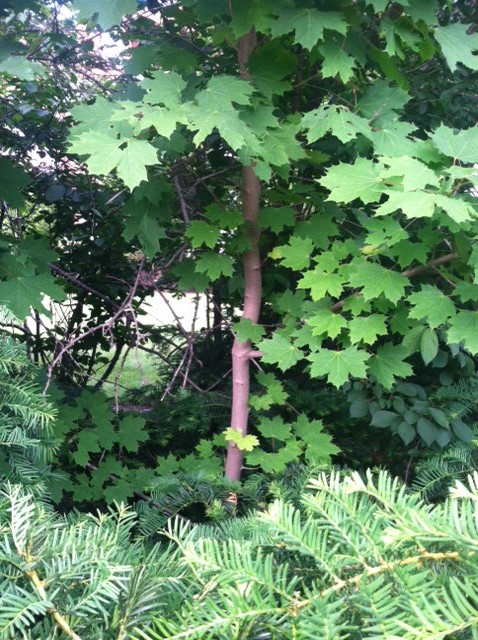
Comm. DeRubeis sent the team out right away and they got to work. See the finished product below. They also identified cherry and other blooming trees that had been totally obstructed, which could now be showcased.
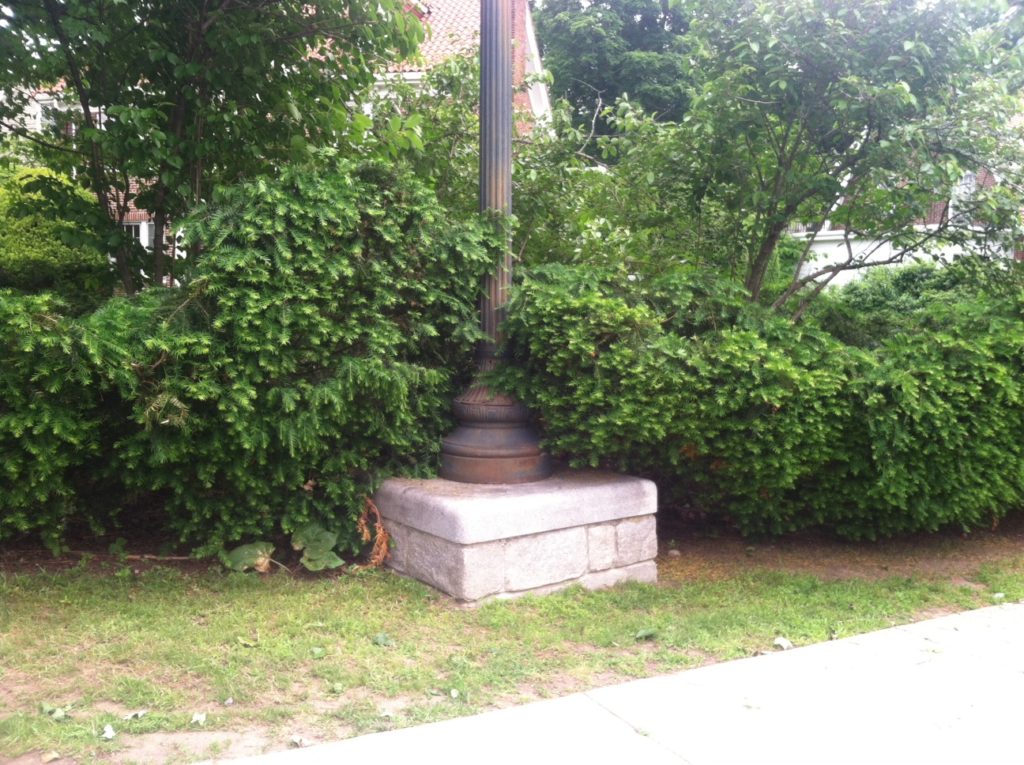
Around the corner, the view of the NW intersection of Hammond and the Carriage Lane was so overgrown that foliage had gobbled up tall directional signs.
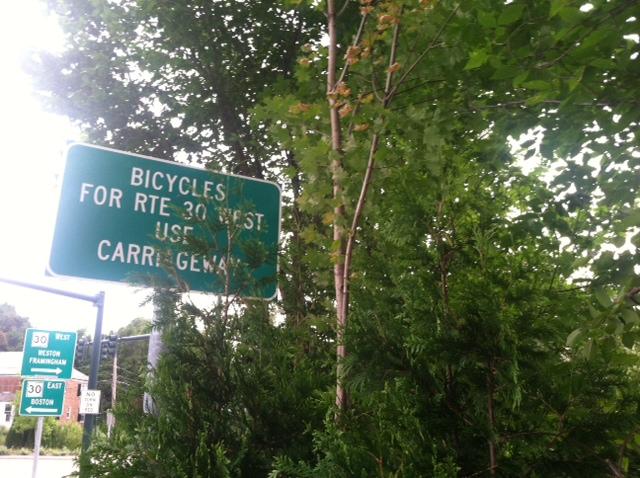
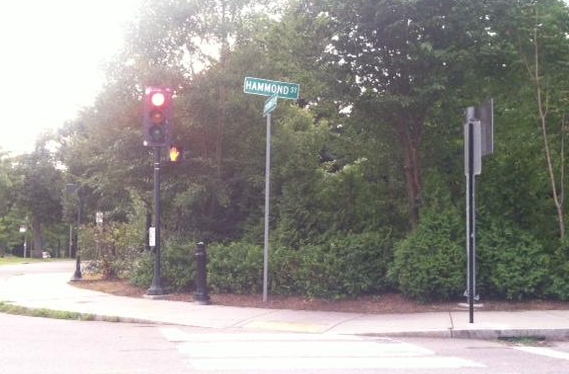
The NE intersection of Hammond and the Carriage Lane was also so overgrown that foliage had gobbled up directional signs, and traffic signals.
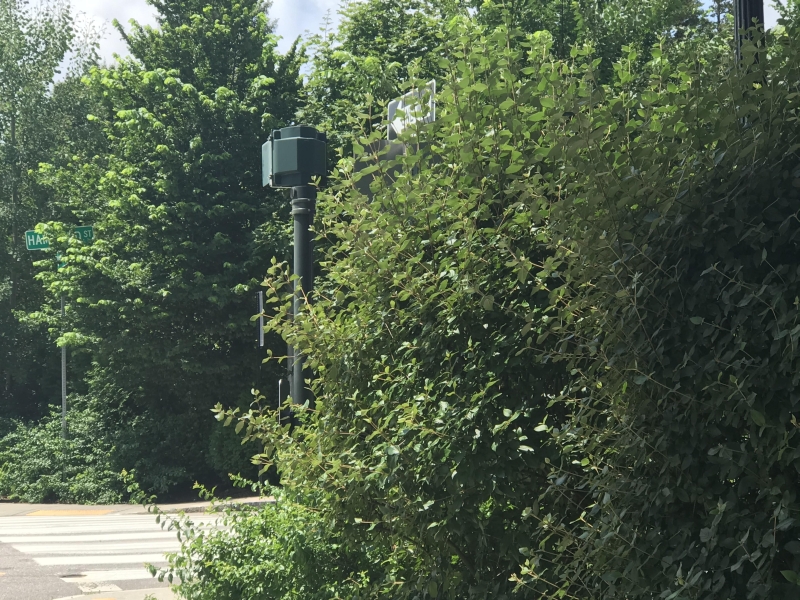
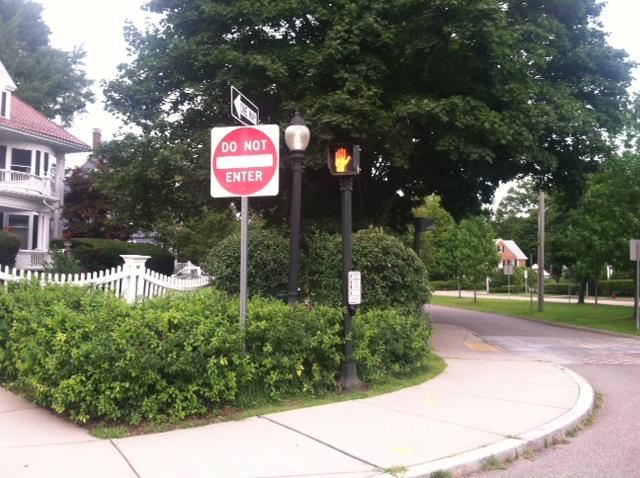
We hope that all the intersections below, and others, will be catalogued and pruned back annually. We also know that there are other locations where foliage has grown to impact safety and can and should be pruned back, or removed entirely.
One serious safety issue was that very often there was no official stop sign along the crossroad, north of the Carriage Lane, for southbound (SB) drivers. This presented extreme dangers: motor vehicles would head on a non-signalized crossroad south toward Commonwealth Avenue and drive straight through an intersection with the Carriage Lane, with no warning to any non-driver using the Carriage Lane. Furthermore, runners were coming from the west and heading eastbound, and near-collisions between EB runners and SB drivers were not uncommon.
We eventually learned that in Newton, the Traffic Council, a sub-committee of the Public Safety and Transportation Committee, has to approve all requests for stop signs. To the Traffic Council we went.
We began by asking Councilor Emily Norton to docket for stop signs for a few intersections, and were thrilled to have success. With that success in hand, we moved forward, in 2018 enlisting the enthusiastic assistance of Councilor Andreae Downs as a co-docketer. With the 2020 elections, City Councilor Andrea Kelly also co-docketed for these items. We are appreciative to all who played a role in this important essential feature. Below you can see all the intersections where we had success with the addition of a STOP sign for SB drivers on the cross road before the Carriage Road.
We also would like to thank traffic engineers Jason Sobel and Izaac Prizant, from the Transportation Division, for supporting these requests.
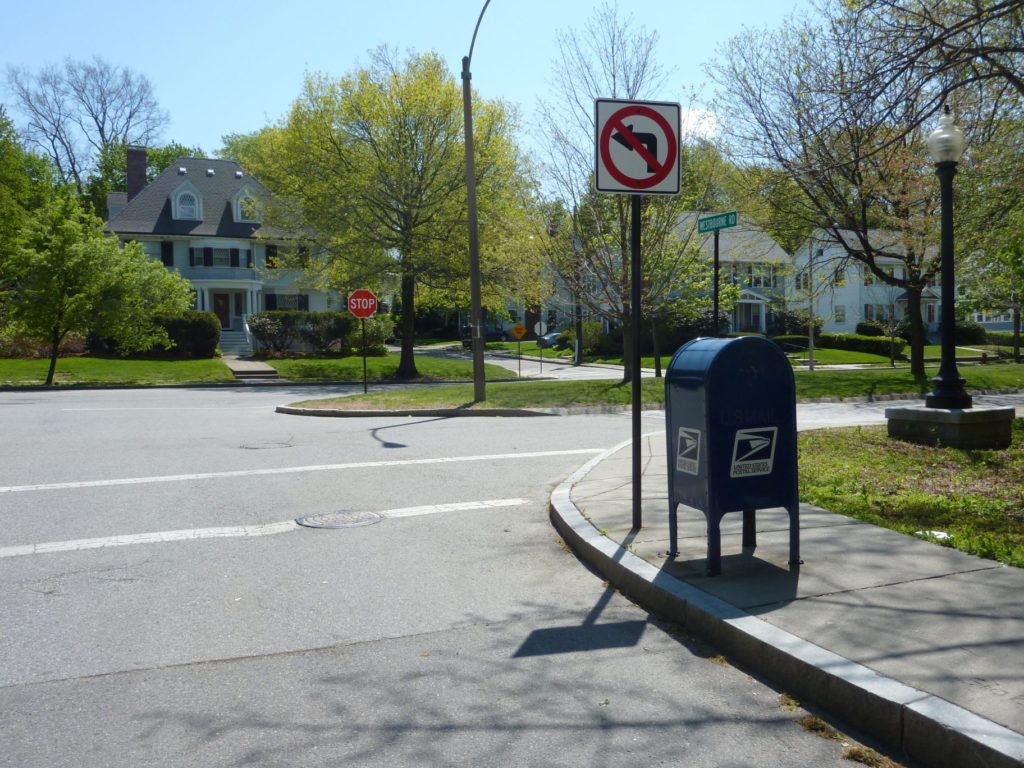
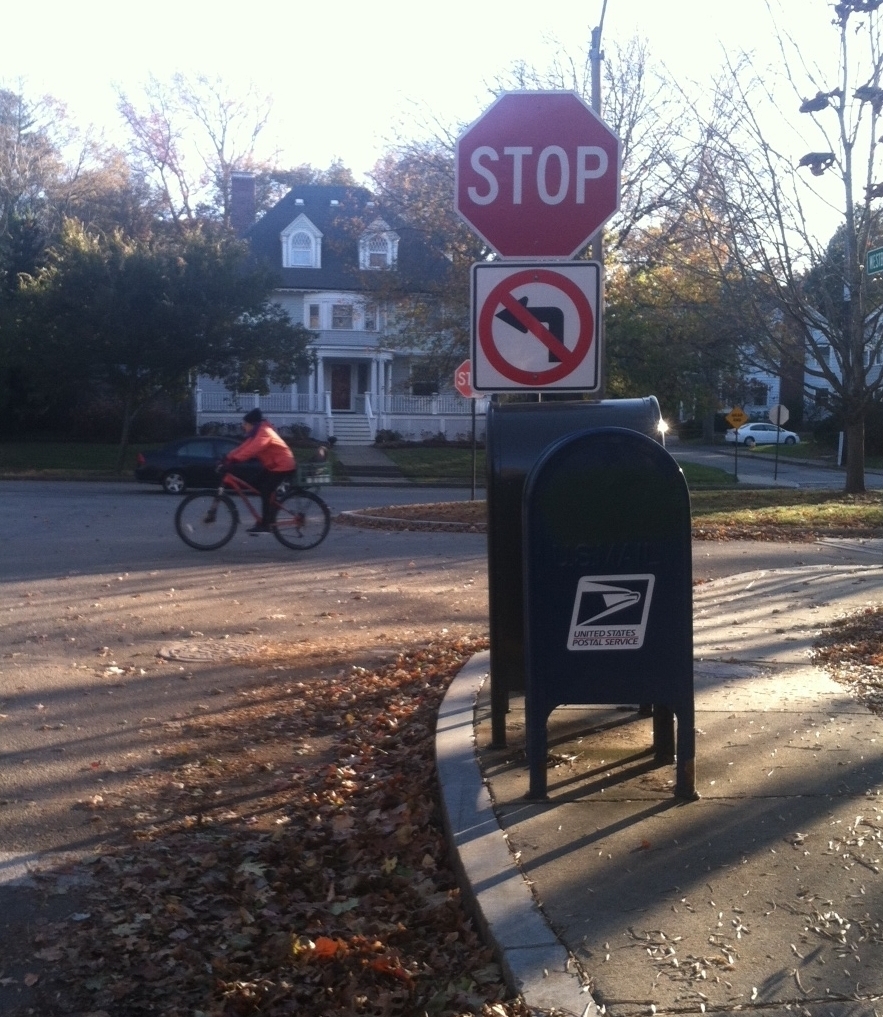
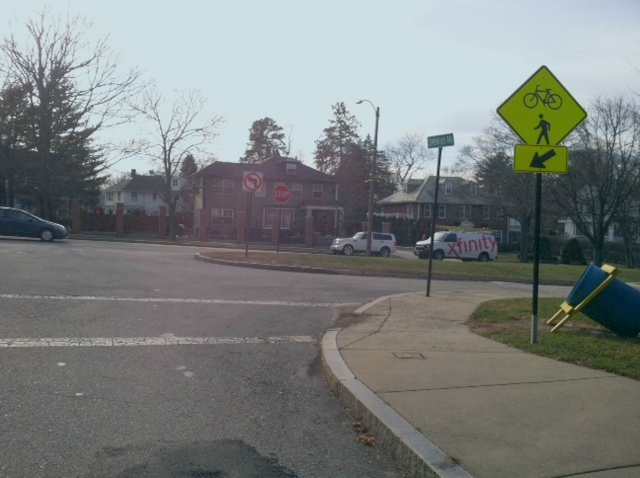
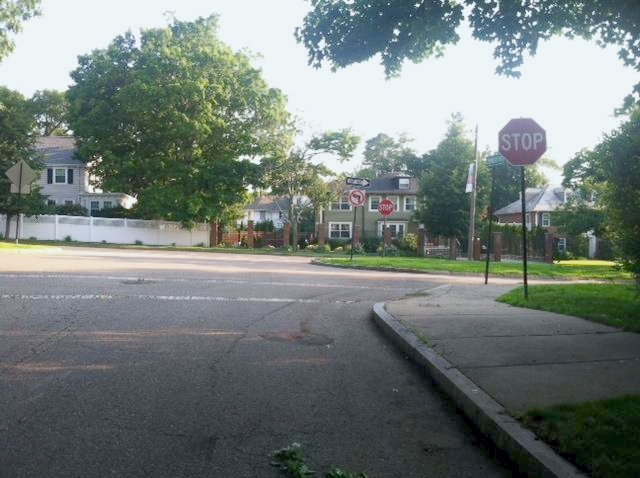
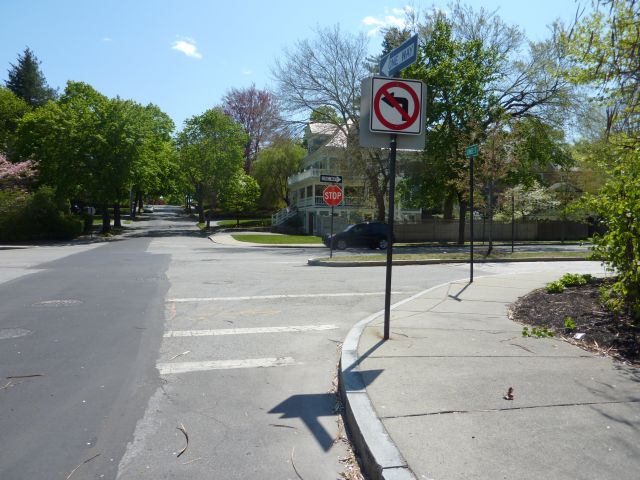

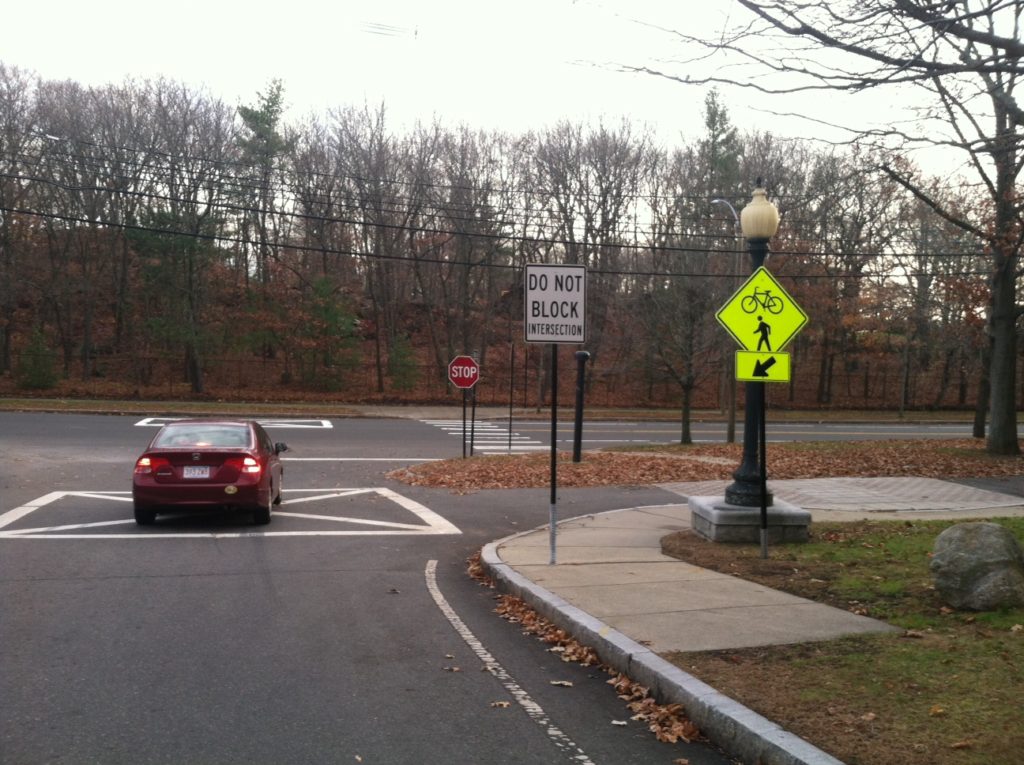
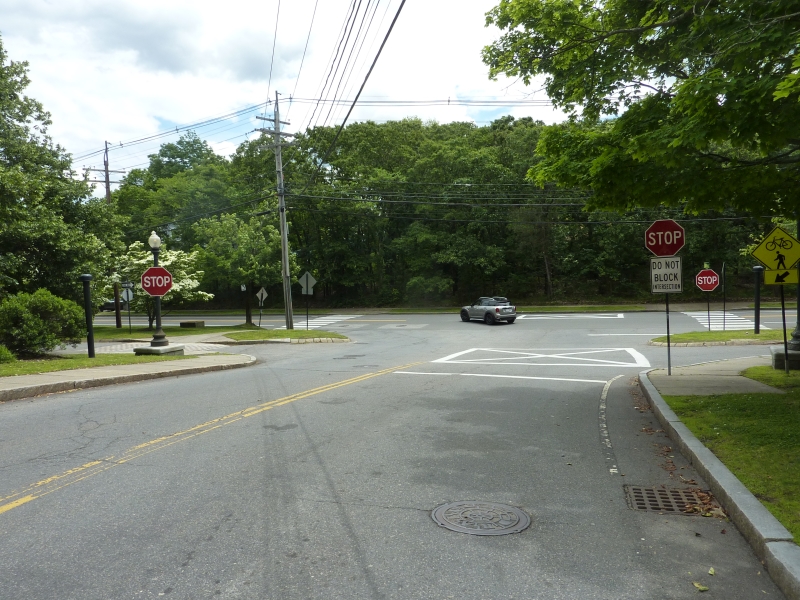
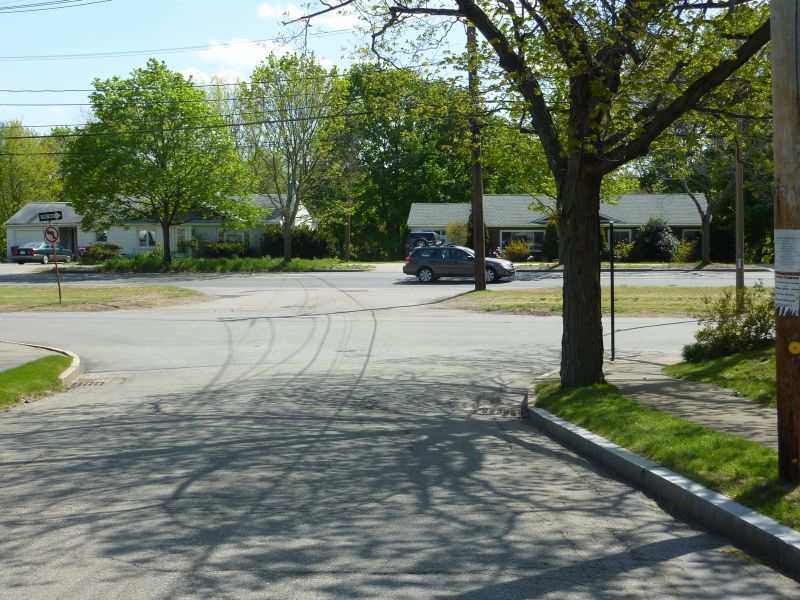
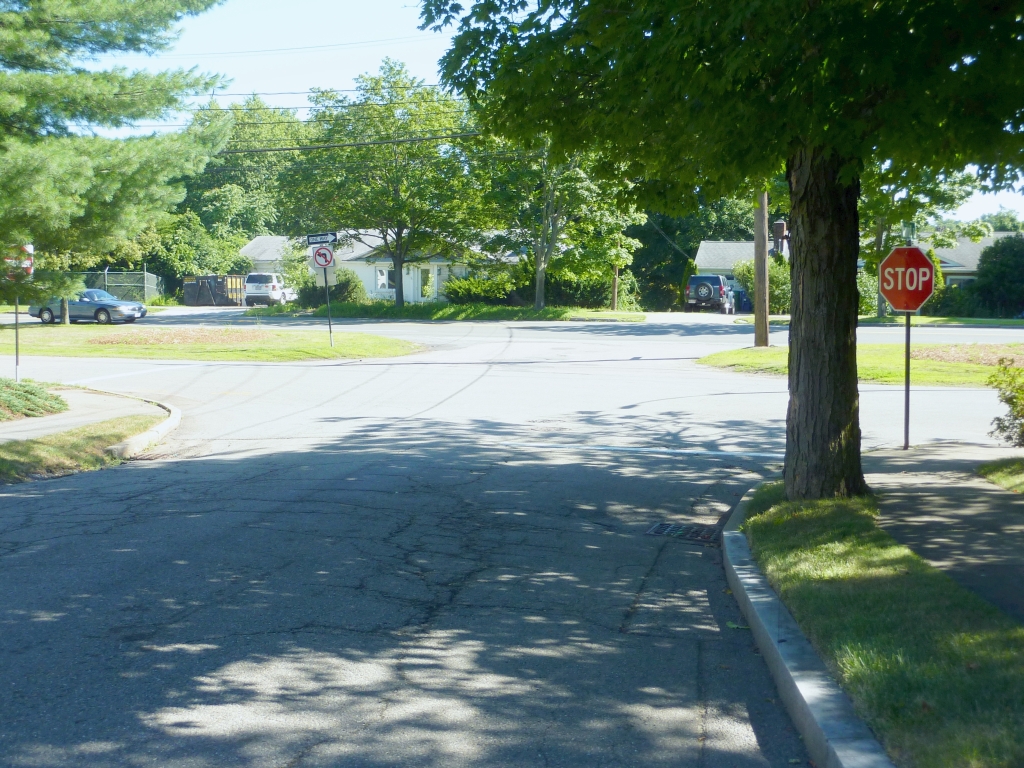
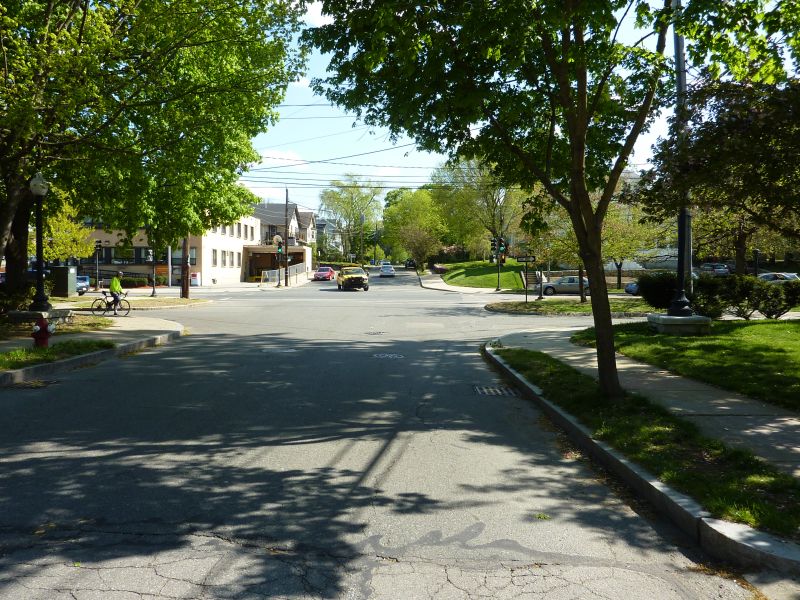
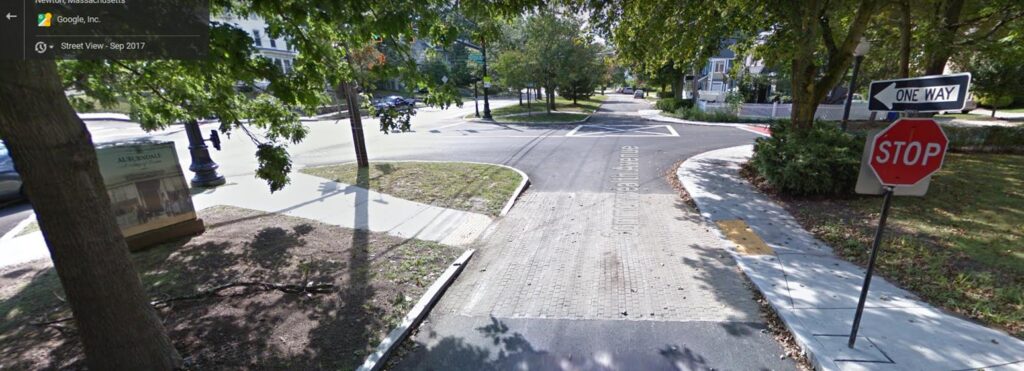
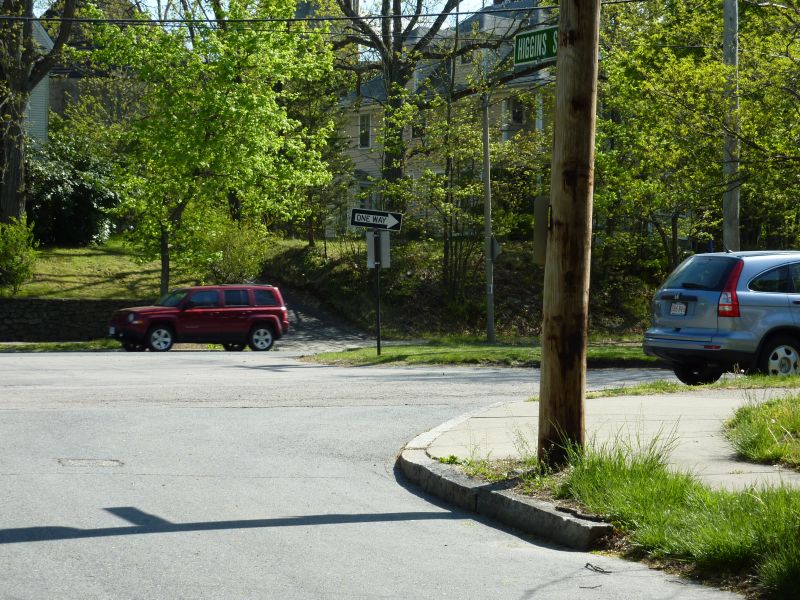

Very often there was an official stop sign along the crossword, north of the Carriage Lane, for southbound drivers. However, Newton roads twist and turn, and often twist and turn while going downhill. Add to that overhanging branches from large trees nearby, and we have a dangerous situation.
See a few of these dangerous situations and the solutions we presented to the City. These required no new Traffic Council dockets, because stops were already in the TPR.
Morseland southbound curves around. Between the curve and the tree, drivers simply could not see the stop sign until they were at the corner, and by then it was often too late to stop for runners and pedestrians coming west from the Carriage Lane.
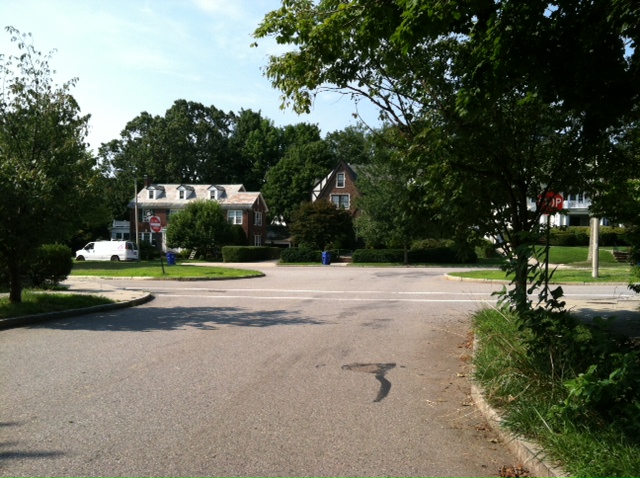
We identified both the problem and a simple and inexpensive solution.
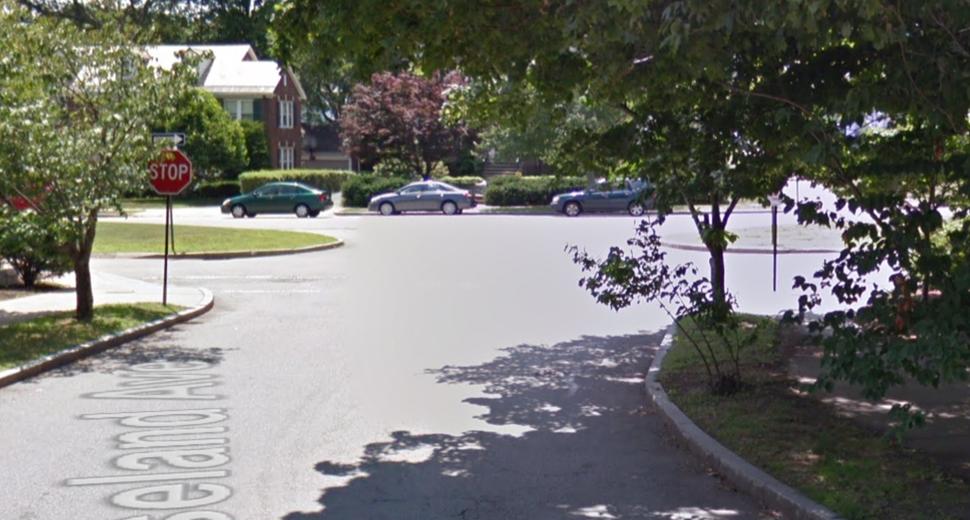
Valentine was particularly challenging. At first, Valentine did not even have a stop sign there. (Bill Paille is responsible for the DO NOT BLOCK THE BOX paint.) To get an initial stop sign, we had to go to Traffic Council. Councilors Norton and Downs docketed this item.

Traffic Council approved the stop sign at that intersection. In that discussion, we identified the issues with the heavily curving road accompanied by a sharp downhill. We suggested a “Stop Ahead” sign up the hill, as you see in the image below, in addition to the stop sign at the corner.
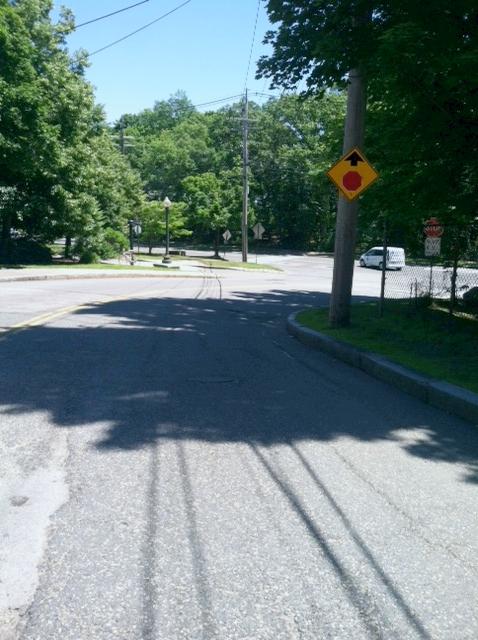
Visibility problems remained, however, as many drivers were contractors coming from West Newton who did not know the neighborhood and weren’t aware that there were pedestrians to the right at the road below, and also because many drivers thought the stop sign was a reference to the beyond, the one at the corner of Valentine and Commonwealth Avenue.
Thus, we suggested a stop sign on the left. Our Transportation Division outdid us, and placed a really large and visible stop sign on the left.
Compliance is now much much higher than it was before. One contractor in a large van recommended the stop sign to the right be placed lower on the pole, since it’s had to see beneath the tree leaves. Getting feedback from people driving, at the site, asking them the question directly, “What would help you here?” is something the City needs to be doing more of.
